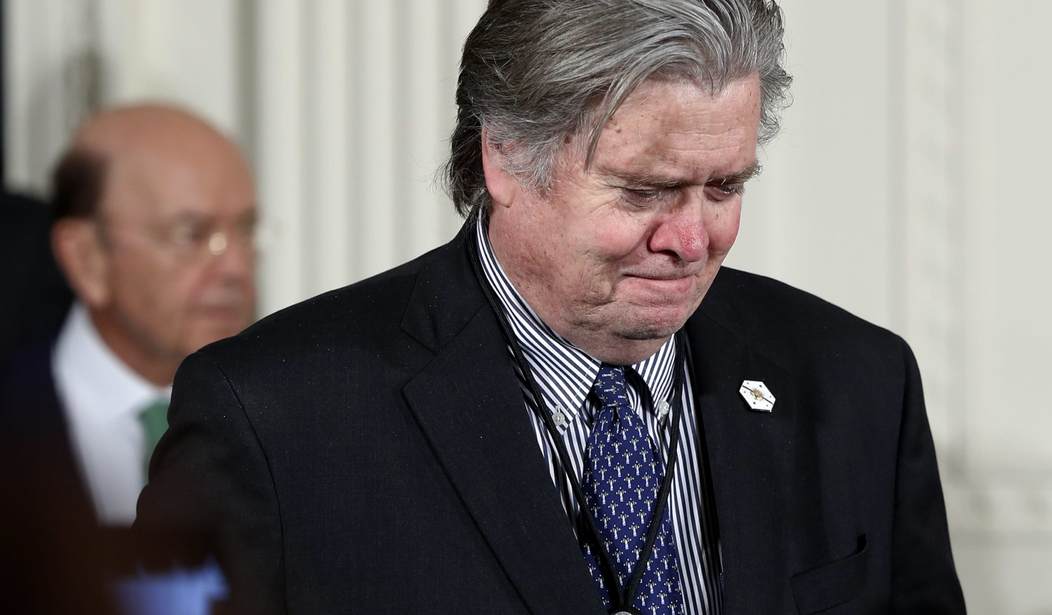Donald Trump is not faring too well in the polls. Real Clear Politics has the public’s approval of his presidency at 41.4 percent with 53 percent disapproving. Gallup puts it at 38 percent approval and 57 percent disapproval. In the usually reliable Quinnipiac poll, the numbers are worse: 37 percent approval to 56 percent disapproval.
These low numbers, seemingly getting lower each day, show that Trump and his administration are in trouble. You would expect that a new president, coming into the White House after a slim margin of victory, would appeal to the country to come together and reach out to the opposition party to work on legislation they could all agree upon. Indeed, when George W. Bush took office, he turned to the liberal “lion of the Senate,” the late Ted Kennedy, to work together on education policy, an area in which they could find common ground.
Trump, however, went the other way. Led by the Breitbart wing of the White House, particularly by Steve Bannon, Trump has decided to appeal only to his base, which will stick with him no matter what he does. Many others gave him their vote because they hated Obama or Hillary or because they believed he would bring needed change in Washington. When Americans heard what was in the Ryan healthcare bill that fell apart, many of those who voted for him were horrified to discover, as conservative policy analyst Avik Roy points out, that the bill would “make coverage unaffordable for millions” and that it would appear to support the crude left-wing attack that Republicans wanting only to harm the poor:
Expanding subsidies for high earners, and cutting health coverage off from the working poor: it sounds like a left-wing caricature of mustache-twirling, top-hatted Republican fat cats. But not today.
This is the opposite of what Trump promised during his populist campaign: that everyone would have access to good healthcare at affordable prices. As Rich Lowry aptly put it:
In light of all this, the product of the Ryan-Trump partnership on health care was a bill bizarrely at odds with a national election Republicans had just won on the strength of working-class voters. Under the GOP replacement, fewer people would have had coverage, and workers further down the income scale would have been particularly hard hit.
Trump was furious when the bill was pulled. He wanted a victory. Never mind that only around 17% of Americans thought it was a good idea. He settled on who should take the blame for it going down, tweeting:
Democrats are smiling in D.C. that the Freedom Caucus, with the help of Club For Growth and Heritage, have saved Planned Parenthood & Ocare!
Then, on March 30, he began to threaten them with another tweet :
The Freedom Caucus will hurt the entire Republican agenda if they don’t get on the team, & fast. We must fight them, and & Dems, in 2018!
As an anonymous White House official told The Daily Beast, Trump “is in a vengeful mood, again.” That he is also taking the fight to Paul Ryan should come as no surprise.
That is what his principal adviser, Steve Bannon, always wanted. Remember that Bannon and his supporters unsuccessfully tried to beat Ryan in the Wisconsin primary by running a populist candidate against him, just as they did successfully in Virginia, causing Minority Leader Eric Cantor to lose the primary to Dave Brat in his congressional district.
When Bannon spoke to me at a party in his Capitol Hill house in November of 2013, he said, “I want to bring everything crashing down, and destroy all of today’s establishment.” Back then, when he was East Coast coordinator of the Tea Party, his strategy was to put in Congress people sworn to the kind of populist nationalism he supported, and if they wavered, to move against them and make sure they lost their seats in the future. Now, he is urging Trump to adopt his playbook.
If Trump wanted to have an early legislative win, he could have begun his presidency by going to the Democrats, and to Minority Leader Chuck Schumer, suggesting that they work together on the large infrastructure bill Trump had promised during the campaign. The issue would have gained bipartisan support, putting pressure on the Freedom Caucus to either come along or decide to stand alone against the first big measure the new president sought.
Although Trump has intimated that he is contemplating an outreach to the Democrats to work on healthcare, it may be too late. The left-wing base of the Democratic Party wants only impeachment, and will do anything but work with Trump to fashion out a new healthcare bill. Why should they trust him? Even those inclined to accept Trump’s offer know that he often changes his mind. Just contemplating such cooperation has rankled Speaker Ryan, who denounced the very idea.
Trump and Bannon’s divide-and-conquer strategy does not appear to be working. Attacking and alienating the Freedom Caucus and the Democrats will leave him with insufficient votes to pass anything. He obviously needs the advice of someone with political experience who knows how to bring people together instead of pulling them apart.









Join the conversation as a VIP Member